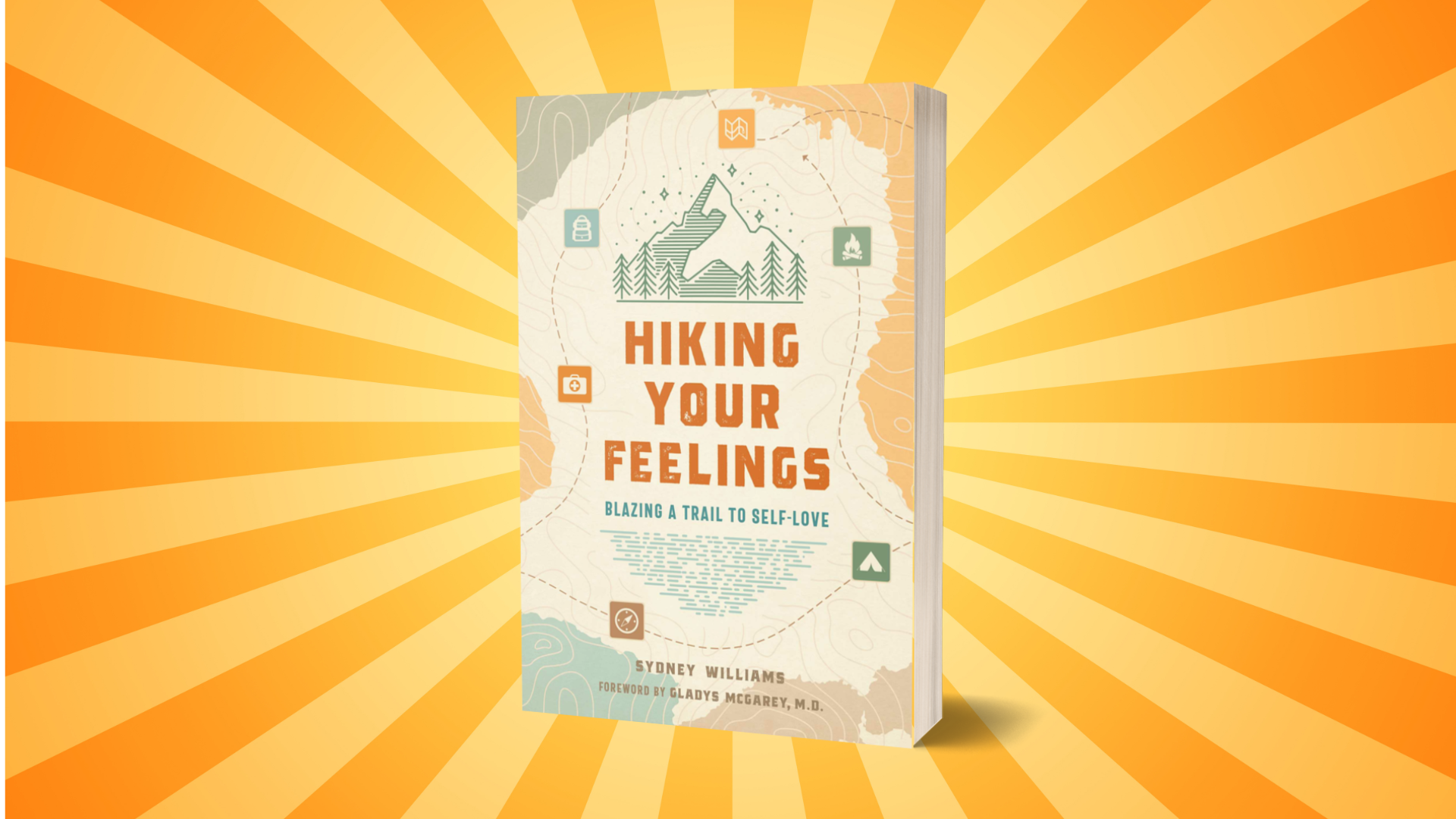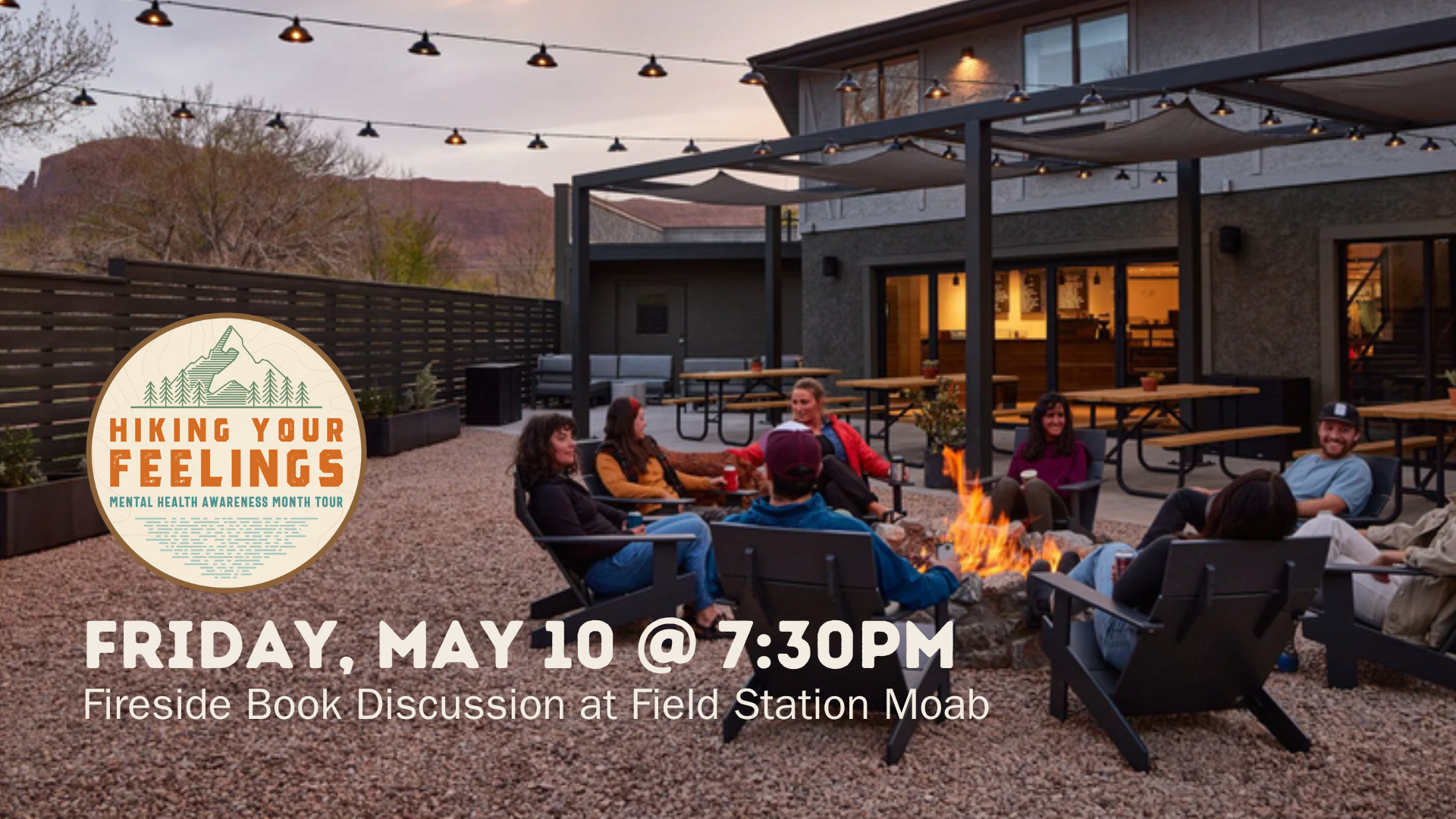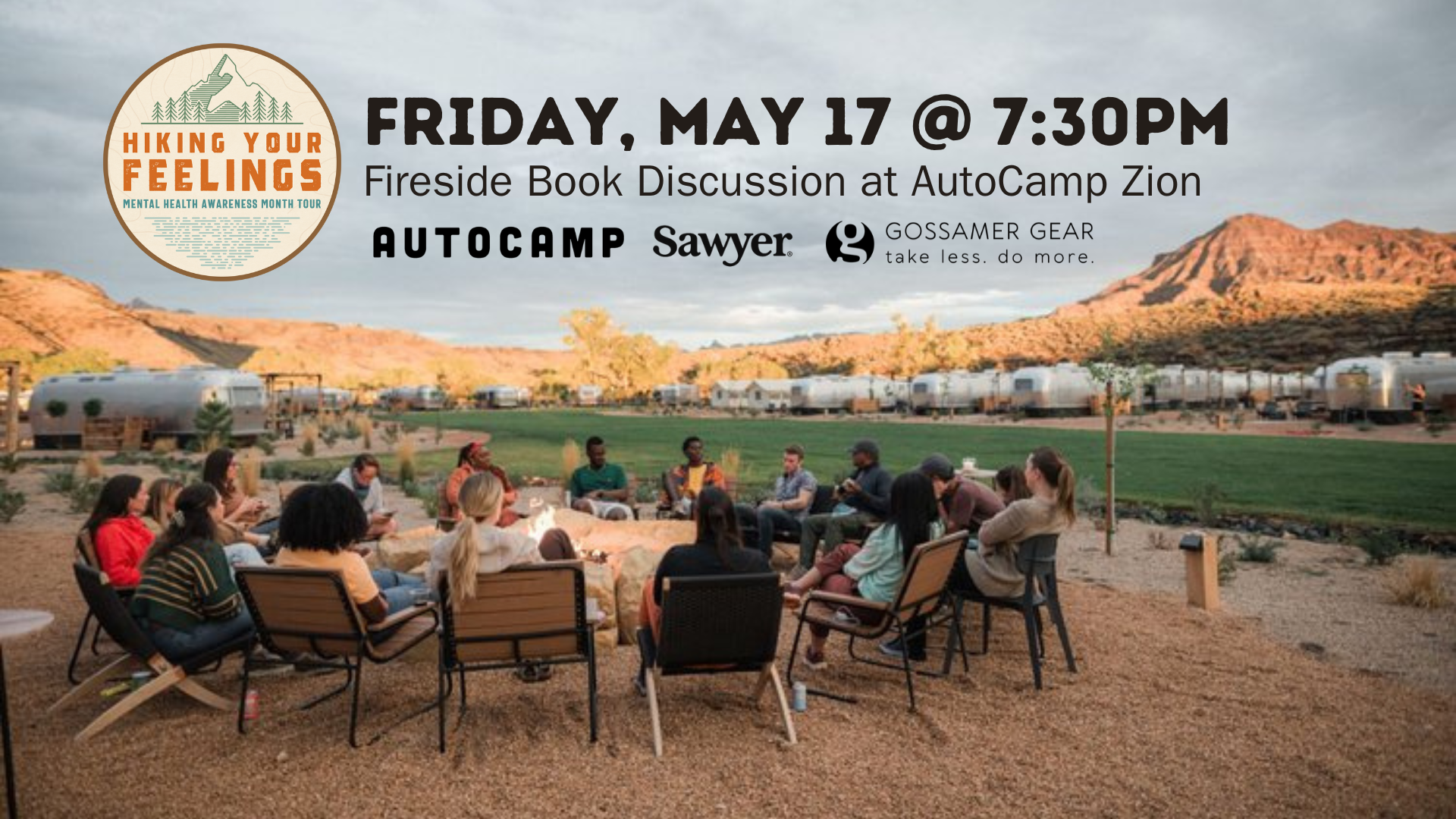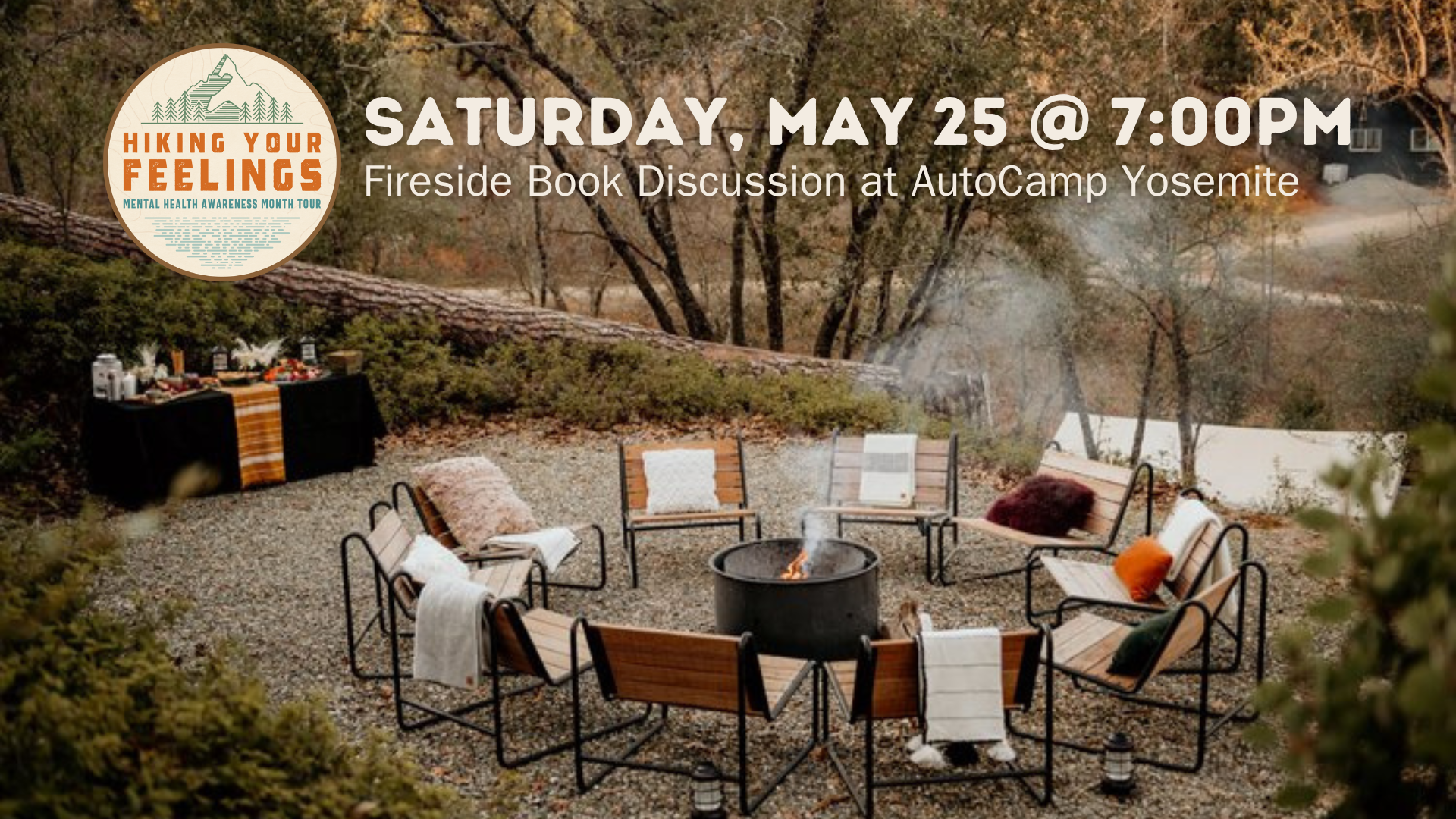The Outdoor Type: Taylor Johnson
Welcome to “The Outdoor Type” — a series of interviews with diabadasses who love spending time outside. We talk about the realities of outdoor adventuring with diabetes, tips and tricks for diabetes management, and most importantly, our love for the outdoors.
“I went and met their entire litter of puppies that they were training and as soon as I stepped out of the car, the dogs were like nope, her blood sugar is high. They were all over me. It was really cool. I was sold.”
- Taylor Johnson
Taylor comes to us from Texas where she grew up outdoors and now works as a mental health professional. Taylor has always had low hypo-awareness, but after a close call in college with hypoglycemia she decided there had to be a better way. Cue: Claire, her medical alert dog. Read this interview to learn more as we talk about all things medical alert dogs, DIY closed-loop systems, safety in the outdoors, and more.
Please note that any information shared by our interviewees should not be taken as medical advice. You should always consult your doctor before making any changes to your management plan.
Taylor Johnson
Mental Health Professional, Hiker
Years with T1D: 13 (11 if it were up to her first doctor)
Technology: Accu-chek combo pump, Dexcom, DIY closed loop with android apps
Medical ID: MyID
Favorite outdoor activities: Hiking, Raising farm animals
Favorite trail treats: Prince of Peace Honey Ginger Crystals, Kind Bars, Austin’s Peanut Butter Crackers
Taylor’s Top Tips & Takeaways
Being a Black, female, diabetic, outdoor enthusiast comes with its unique set of safety considerations and challenges
As long as you can follow instructions, a DIY closed loop system is totally possible, even for someone with no tech background.
Medical alert dogs can smell the difference between low and high blood sugar, and make a huge difference for those with low hypo-awareness. In Taylor’s case, Claire often catches her lows 15 minutes before her CGM does.
Between physical exercise and mental relief that the outdoors provides, Taylor’s best blood sugar days have been days when she’s spent time outside.
When it comes to the outdoors, planning is your best friend. But it also helps to make peace with the fact that the outdoors is the outdoors. It has a mind of its own and all the planning in the world isn’t going to stop an unexpected rainstorm or route detour.
Where are you calling in from and how long have you had diabetes?
I am in Georgetown, Texas. It’s just 15 minutes north of Austin. I have been diabetic for, well, there are two answers to that question. I was diagnosed as a type 2 in 2008, but was re-diagnosed in 2010 with type 1, so I technically have had diabetes for 13 years, but it’s definitely broken up into two distinct periods.
Note: Taylor has been a victim of medical racism. Her doctor misdiagnosed her due to her skin color. Although we don’t go into detail on this experience in this interview, we want to encourage everyone to read Taylor’s article, How Medical Racism Destroyed My Health, listen to her story in episode 1 of the podcast series, More Than a Diabetic, and share her story to continue raising awareness of medical racism.
Are there any connections between the medical racism you experienced and your experience outdoors?
There definitely is some overlap in that everywhere isn’t a safe place to be Black and be outdoors. Especially not as a Black woman, and especially not as someone who prefers and tends to adventure alone. It’s definitely something I’m always aware of.
There are some really great resources online about how Black people have been kept out of outdoor spaces with threats of violence, specifically in some of our national parks. So there is a lot of carry over still where you don’t see a lot of Black people in outdoor spaces. I know I’ve gone to national parks and have done popular trails and I don’t see Black people at all. And even when we start talking about farming and agricultural practices, even though historically Black people worked the land of this country, Black farmers and agriculturalists have been pushed out of those sectors. And with that absence comes a lack of safety.
Especially here in Texas. I love Texas, don’t get me wrong. But there absolutely are places and hiking trails in the state that I can’t go on by myself. Even in the area where I’m from, I grew up in a national forest, and there are places in the national forest where I wouldn’t go.
Can you elaborate a little bit on those places, and why they aren’t safe?
It’s a combination of things. A lot of the forest areas here in Texas here have a historical association with lynchings. From my personal experience, I know that people still have klan meetings in the forest. It’s really kind of an ugly reality of life. But 10, 20 minutes from where I grew up in the northern areas of the forest people still have ku klux klan meetings. Those are just things you have to keep in mind when you navigate and go places.
Switching gears back to your experience with diabetes, what devices or technologies do you currently use?
So I actually have a pump that not many in the U.S. seem to have. I have the Accu-chek combo pump, and I use that with a Dexcom and I actually DIY closed-loop with android apps.
Can you tell us more about your DIY closed loop system?
So I never had a Medtronic pump or any of the really cool ones. I bounce back and forth between my Accu-chek pump and my Roche pump. The Roche spirit combo is an old pump, it’s one of the few Roche pumps in the U.S. market. It’s also one of the few pumps that will loop that you don’t need an iPhone to loop with. I got really interested in looping when that first became a thing but was super discouraged because you had to have a mac and an iPhone developer thing, there were all of these extra things and I was like oh I don’t have that, and I also don’t have a Medtronic pump to loop with.
I actually stumbled across a blog post from someone in Germany...
And they had the same kind of pump that I had and they were like, oh, I DIY loop. And I was like, what?? What do you mean? I did not think this was possible. So I sent this guy all of these probably very annoying emails and was like can you explain to me how this happened? Where do I find this information? And really just spent 6 months reading and stalking Facebook groups and being like, okay, how do I do this and not end up in the ER?
The loop instructions are fairly straightforward, but I had certainly never built an app before, so I was like this is terrifying, Android studio is terrifying, and I’m going to type one wrong button and it’s all going to blow up. But it’s not. It’s still a thing where if you follow the instructions then it’s totally doable. I did have my friend who is a computer guy look it over to make sure.
But yeah, it’s pretty cool. I had to buy a separate cheap little Android prepaid phone, built the app on there, and it Bluetooths to my pump like my other loops. Even now the Tandem with Control IQ is so tempting, but I’ve gotten so used to being able to tweak and change all kinds of settings and really make it customizable. It’s my favorite thing in the world.
Let’s talk about your outdoor experience.
What are some of your favorite activities?
Interestingly enough, I live in more of an urban area now but I grew up in rural east Texas. So, I grew up outside. I was definitely outside more than I was ever inside at any point. So my grandpa actually had a farm where we grew food and had cows and that sort of thing. So I spent a lot of time as a kid kind of riding around, checking fences, and walking around in the woods, so pre-diabetes it was very much a part of a life, and it didn’t really occur to me that that should change afterwards.
I was actually diagnosed at a time when I was raising sheep and goats for the county fair which involved walking them through the woods to help them build muscle and learn how to climb on things. It sounds really weird to say that outloud. But yeah so I’ve kind of always been outside.
I didn’t actually do things like hiking or backpacking until college because I lived in a rural area so we didn’t have to try to be outside, we just were. So that was a new experience.
How has diabetes played a role in your experience outside?
Texas is wildly hot, and I’m from an area where it’s super humid, and as we all know, insulin works faster in the heat, and that was kind of the biggest shift or issue post-diagnosis. I’m fairly sensitive to small changes in insulin anyway, still not entirely sure why that is. Especially if I’m MDI so I’m taking lantus, the heat will just tank me really quickly. So most of my year, that’s always the fear for being outside. Other than snakes, not a huge snake fan, I’m not afraid of too much. Especially now that I have Claire, she’s like ooh it’s moving let’s play with it, and I’m like no not the rattlesnake.
But yeah, my blood sugar will just tank when it’s hot and I usually don’t feel it. I have very little hypo awareness, and it started almost as soon as I was diagnosed, and as soon as I was put on insulin for sure, I lost any sort of heat tolerance. So that’s what we’re always troubleshooting for and packing stuff in the fanny pack to prevent.
Tell us more about Claire.
Claire is a service dog or medical/diabetic alert dog. People get pretty sensitive about this so it is important to note that she is technically not a support animal, or emotional support animal. Because there are designations in the United States for what dogs can go where, and a lot of people like to blur that line so that they can take that dog anywhere. And it’s actually very dangerous for those of us who have trained service animals to have untrained animals everywhere.
So she is a diabetic alert dog. Like I said, I have basically no hyper awareness most of the time. I had an incident at an outdoor coffee shop while I was in college.
I was out with my friends and it was probably 100 degrees and humid. Typical kind of Texas in August/September. And I was sitting there talking and all I remember is that I almost passed out and was ripping open sugar packets and was sitting on the ground and I don’t even know. It was the worst. And it was one of those things like I was fine two minutes ago, how did we get here?
So I figured I should probably look into doing something about this. And I had gotten a Dexcom but I don’t like the alarms. I hate CGM alarms, they make me really anxious. So I thought, okay what are some alternatives? What are some ways that I can use the technology but also maintain peace of mind? And I came across an article about someone locally who had a service dog, and where they got it. And I started doing a lot of research, which is a big disclaimer: if you’re interested in getting a medical alert dog, do your research. There are definitely scammers out there unfortunately.
So I looked at a few places and luckily met up with someone here locally who was really fantastic and I still didn’t really believe in it. I was like what do you mean, dogs can smell my blood sugar. Like I don’t even know what my blood sugar is all the time, why would the dog know? So I went and met their entire litter of puppies that they were training and as soon as I stepped out of the car, the dogs were like nope, her blood sugar is high. They were all over me. It was really cool and I was sold.
How does she signal high vs. low blood sugar?
How we smell changes—lows have a certain smell, highs have a certain smell—and Claire is scent trained. She was trained to alert any time I’m below 120 or higher than 150, so it’s a pretty narrow range. She’s pretty accurate and is usually 15 minutes ahead of my CGM in catching a low. She is supposed to sit and paw gently, when she’s alerting. So if you see on Instagram, I have some photos of her sitting with her paw in my hand, that’s an alert.
She’s also trained to get progressively more intrusive if I’m not responding. So it starts with a paw, sometimes it’s just a look. A lot of the time she just has an alert face. And it’s sort of creepy. It’s a very uncomfortable stare.
I was just in a Zoom meeting the other day and when I wasn’t paying enough attention while she was alerting at my feet she jumped up and got directly in my face and I was like okay okay. And sure enough I was sitting at like 40.
Can you tell the difference between when she wants your attention because your blood sugar is low and when she wants your attention because she’s a dog?
Normally when she’s doing just dog stuff, I don’t want to say it’s silly, but it’s a lot less serious. Like she’ll stop when she’s redirected, because she had a lot of training. They train for a year starting at 8 weeks old, and they start with obedience training. So when she’s deliberately ignoring commands and things like that it’s called deliberate disobedience, and if I tell her to sit or stop and she won’t, I know I need to check my blood sugar.
If you don’t mind me asking, can we talk about the financial implications of getting a medical alert dog? Is it fairly accessible?
God no. It is wildly expensive. I got very lucky and the particular company that I got Claire through does it at a little bit more affordable rates but they’re also really good with getting you in touch with people to get a grant or scholarship, which I was able to do, and they’re also very helpful when it comes to ideas for fundraising. I only have Claire because I got her at a time when I had just graduated from college and started a full-time job and I was also starting grad school so I was also working as a TA, so I essentially had two jobs and it was an investment that I had to make so that I could sleep at night. So I was like we’re just not going to do fun things for a year, and we’re going to get a service dog, and that’s what we did.
The cool thing though is that there are also people who self train. So if you have a pet and are fairly confident in your abilities to stick to programs, then you can self train. I think after Claire if I get another service dog, I’m going to try my hand at training.
What kinds of activities do you do with Claire?
We’re pretty lucky. There’s this huge area. I’m guessing some really rich person just bought like 60 acres and turned it into a park that is free or available at discounted rates for people with the zip code that I’m in. So we try to go out there every weekend. There is a river that runs through the middle of the town so you can walk that trail and it’s 5 or 6 miles.
What do you keep in your fanny pack?
So I’m really bad with purses and keeping track of things. Anyone who knows me will tell you that I will lose everything very quickly, I once almost lost my Omnipod pdm. It was a whole mess. Claire, however, is a problem because I can go nowhere without poop bags, treats, lysol wipes. This also included an extra leash when she was a puppy because she chewed through several leashes. So I had her pack of things and thought, you know what would make more sense instead of me also carrying an extra purse is, putting my glucose meter in there, glucose, snacks, and our water bottles clip on too. So always those things, always some form of sugar, my meters to do physical blood sugar checks because Dexcom is hit or miss, and for Claire, she has to be able to smell my blood so I have to finger stick pretty regularly anyway.
What is your go-to glucose for the outdoors?
I have these weird ginger chews by Prince of Peace from Amazon. They’re super sugary, but I also have allergies so they’re great for that too. They also work super quickly. I usually have a KIND bar too, something that is mostly nuts and fats. I don’t carry liquids very much because they’re easy for me to puncture and make a mess.
Why do you love going outside? What do you feel like you’ve gained from going outside?
Being outside is always the easiest way to destress and decompress. I’m generally plugged into 12,000 things and especially being diabetic we never really escape technology at this point, so I think the closest I get is spending significant amounts of time outside and unplugged.
I was lucky enough to have this study abroad experience and at the end of it, we kind of road tripped around the eastern coast of Australia but we did it and we camped. So we stayed in rural areas and camped on top of our cars and we spent all of our time outside and that was probably the most relaxed I’ve been in years. And I try to always remember that the mental health benefit is nice, but it also brings a very practical benefit of helping my blood sugar. Whether it’s the physical exercise aspect of it or the relaxation aspect of it, or it’s both, my best blood sugar days are probably when I spend an hour or so outside at least.
Any words of advice for a diabetic who might be new to the outdoors?
I think being outside can be really scary, especially if you're somewhere fairly isolated. That’s a completely understandable and probably very healthy fear. There are some things I won’t do alone or haven’t done alone for that very reason, I do like my safeguards. But I think planning is always your best friend. As diabetics there are certain things we can plan for. We plan for lows, we plan for highs, we bring extra supplies, bring a friend if that’s what you need to feel comfortable but planning, planning, planning. And just making peace with the fact that the outdoors is the outdoors. It’s not going to always do what you want it to do. It’s a control issue and we love our control with all of our gadgets and snacks. And you can only plan so far, and then you have to be okay with, you know what it might rain, it might be hotter than I thought it was going to be, I might end up walking a little farther, and it just has to be okay.
How do you typically educate your friends about your diabetes when going on hikes?
I have one main travel buddy and she is very well versed in what lows look like, what highs look like, and what you do in each situation. I think a common misconception is that people without diabetes think everything is fixable with insulin and I’m like please god don’t give me insulin. There are very few circumstances where I will ever need you to give me insulin. I’m pretty sure I told her to never give me insulin. Just when in doubt, give me a snack.
“I think a common misconception is that people without diabetes think everything is fixable with insulin...There are very few circumstances where I will ever need you to give me insulin.”
If I know we’re going to be doing something pretty physical...Like there is this limestone formation in Central Texas called Enchanted Rock and it’s basically a hike straight up, and we did it this one morning and it was really fun. But I told my friend, I want you to know that it is totally under this very limited circumstance to ask me like, check your blood sugar. This seems weird, check your blood sugar. Because I knew that I was going to be exerting more energy, I probably needed that extra back up. So sometimes it requires being a little more flexible than what I would like for people being in my diabetes business. But when I know we’re doing something that is going to take a lot physically I’m like, “You have my total permission, if I seem extra clumsy, please ask. Please tell me to check my blood sugar, this is where everything is.”
And that’s generally my spiel. I make sure they’re well aware of what things they need to be looking for, where all my supplies are, and what all my supplies are.
What’s next on your outdoor adventures list?
When the world stops being crazy and I can actually see my friends again, I want to spend some time camping and hiking the trails out at Fort Davis in Big Bend. I have yet to go to the McDonald observatory and do a night tour which I’ve heard is one of the best places to check out the stars in the state. I’ve been confined to the Austin metro for too long.
